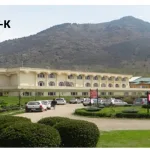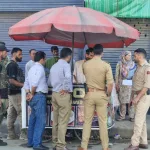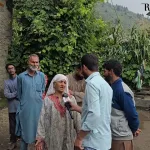Sarcomas are a diverse group of cancers that originate from connective tissues, such as bones, muscles, and nerves. They account for a relatively small percentage of all cancer cases, making them a rare entity in the world of oncology. However, within this already uncommon group of malignancies, there exist even rarer subtypes that pose unique challenges for patients and physicians alike. In this article, we delve into the characteristics of these rare sarcoma subtypes, shedding light on their aggressive nature and the need for specialized treatment approaches.
The term “rare sarcoma subtypes” encompasses a wide array of malignancies, each with its own distinct features. One such subtype is alveolar soft part sarcoma (ASPS), a highly aggressive tumor that typically affects young adults. ASPS often presents as a painless mass in the extremities, lungs, or other soft tissues. Despite its slow growth pattern, it has a propensity for metastasis, frequently spreading to distant sites such as the lungs, bones, or brain. The rarity of ASPS poses a challenge in terms of diagnosis and treatment, as its unique histological characteristics can mimic other tumors, leading to delays in appropriate management.
Another rare sarcoma subtype is epithelioid sarcoma, which typically affects young adults in their 20s or 30s. This aggressive malignancy often arises in the extremities, presenting as a painless nodule or ulcer. Epithelioid sarcoma has a remarkable ability to invade surrounding tissues and lymph nodes, making it challenging to achieve complete surgical resection. Furthermore, it tends to recur locally and metastasize to distant sites, particularly the lungs.
Clear cell sarcoma is yet another rare subtype characterized by its propensity for recurrence and distant metastasis. This sarcoma usually occurs in young adults, primarily affecting the extremities, with the feet being a common location. Clear cell sarcoma is notorious for its resistance to conventional chemotherapy and radiation therapy, emphasizing the need for alternative treatment strategies. Identifying specific molecular alterations, such as the EWSR1-ATF1 gene fusion, has opened doors for targeted therapies that hold promise for improved outcomes in these patients.
Gastrointestinal stromal tumors (GISTs) also fall under the umbrella of rare sarcoma subtypes. Although GISTs are relatively more common than the previously mentioned subtypes, comprising 1-3% of all gastrointestinal malignancies, they still represent a rarity in clinical practice. GISTs typically arise in the stomach or small intestine and may present with abdominal pain, gastrointestinal bleeding, or a palpable mass. Understanding the molecular underpinnings of GISTs has revolutionized their treatment, with the introduction of tyrosine kinase inhibitors providing a breakthrough in the management of metastatic or unresectable disease.
The rarity of these sarcoma subtypes poses significant challenges in terms of research, clinical trials, and the development of targeted therapies. They are characterized by their aggressive behavior, propensity for metastasis, and resistance to conventional therapies. Their rarity poses challenges in terms of diagnosis, treatment, and research. Advances in molecular profiling have paved the way for targeted therapies, offering hope for improved outcomes in these patients.
(The Author is Consultant Surgical Oncologist, HCG Cancer Centre, Jaipur)





